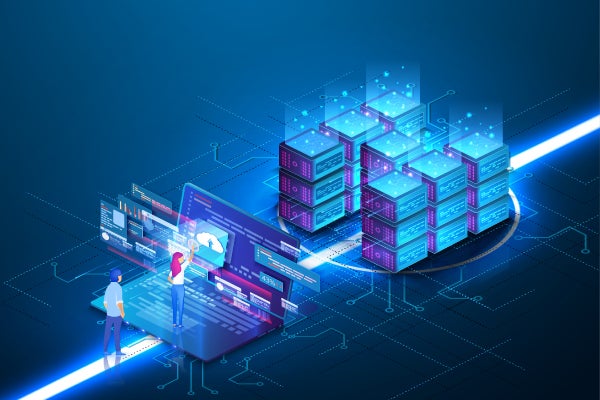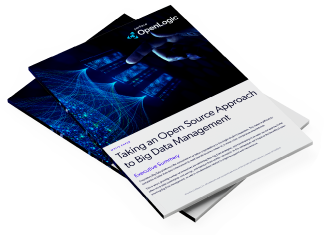
Open Source Big Data Infrastructure: Key Technologies for Data Storage, Mining, and Visualization
Big Data infrastructure refers to the systems (hardware, software, network components) and processes that enable the collection, management, and analysis of massive datasets. Companies that handle large volumes of data constantly coming in from multiple sources often rely on open source Big Data frameworks (i.e. Hadoop, Spark), databases (i.e. Cassandra), and stream processing platforms (i.e. Kafka) as the foundation of their Big Data infrastructure.
In this blog, we'll explore some of the most commonly used technologies and methods for data storage, processing, mining, and visualization in an open source Big Data stack.
Back to topData Storage and Processing
The primary purpose of Big Data storage is to successfully store vast amounts of data for future analysis and use. A scalable architecture that allows businesses to collect, manage, and analyze immense sets of data in real-time is essential.
Big Data storage solutions are designed to address the speed, volume, and complexity of large datasets. Examples include data lakes, warehouses, and pipelines, all of which which can exist in the cloud, on-premises, or in an off-site physical location (which is referred to as colocation storage).
Data Lakes
Data lakes are centralized storage solutions that process and secure data in its native format without size limitations. They can enable different forms of smart analytics, such as machine learning and visualizations.
Data Warehouses
Data warehouses aggregate datasets from different sources into a single storage unit for robust analysis, data mining, AI, and more. Unlike a data lake, data warehouses have a three-tier structure for storing data.
Data Pipelines
Data pipelines gather raw data from one or more sources, potentially merge and transform it in some way, and then transport it to another location, such as lakes or warehouses.
Related Technologies
No matter where data is stored, at the heart of any Big Data stack is the processing framework. One prominent open source example is Apache Hadoop, which allows for the distributed processing of large datasets across clusters of computers. Hadoop has been around for a long time, but is still popular especially for non-cloud-based solutions. It can be seamlessly coupled with other open source data technologies like Hive or HBase for a more comprehensive implementation to meet business requirements.
Back to topData Mining
Data mining is defined as the process of filtering, sorting, and classifying data from large datasets to reveal patterns and relationships, which helps enterprises identify and solve complex business problems through data analysis.
Machine learning (ML), artificial intelligence (AI), and statistical analysis are the crucial data mining elements that are necessary to scrutinize, sort, and prepare data for deeper analysis. Top ML algorithms and AI tools have enabled the easy mining of massive datasets, including customer data, transactional records, and even log files picked up from sensors, actuators, IoT devices, mobile apps, and servers.
Every data science application demands a different data mining approach. Pattern recognition and anomaly detection are two of the most well-known and both employ a combination of techniques to mine data.Let’s look at some of the fundamental data mining techniques commonly used across industry verticals.
Association Rule
The association rule refers to the if-then statements that establish correlations and relationships between two or more data items. The correlations are evaluated using support and confidence metrics, where support determines the frequency of occurrence of data items within the dataset, and confidence relates to the accuracy of if-then statements.
For example, while tracking a customer’s behavior when purchasing online items, an observation is made that the customer generally buys cookies when purchasing a coffee pack. In such a case, the association rule establishes the relation between two items (cookies and coffee packs), and forecasts future buys whenever the customer adds the coffee pack to the shopping cart.
Classification
The classification data mining technique classifies data items within a dataset into different categories. For example, vehiclescan be grouped into different categories, such as sedan, hatchback, petrol, diesel, electric, etc., based on attributes such as the vehicle’s shape, wheel type, or even number of seats. When a new vehicle arrives, it can be categorized into various classes depending on the identified vehicle attributes. The same classification strategy can be applied to categorize customers based on factors like age, address, purchase history, and social group.
Unlock Value by Open Sourcing Your Big Data Stack
Download the white paper "Taking an Open Source Approach to Big Data Management" to find out how to transition off of proprietary data platforms and save up to 60% in annual costs.
Clustering
Clustering data mining techniques group data elements into clusters that share common characteristics. Data pieces get clustered into categories by simply identifying one or more attributes. Some of the well-known clustering techniques are k-means clustering, hierarchical clustering, and Gaussian mixture models.
Regression
Regression is a statistical modeling technique using previous observations to predict new data values. In other words, it is a method of determining relationships between data elements based on the predicted data values for a set of defined variables. This category’s classifier is called the "Continuous Value Classifier."
Sequence & Path Analysis
One can also mine sequential data to determine patterns, wherein specific events or data values lead to other events in the future. This technique is applied for long-term data as sequential analysis is key to identifying trends or regular occurrences of certain events. For example, when a customer buys a grocery item, you can use a sequential pattern to suggest or add another item to the basket based on the customer’s purchase pattern.
Neural Networks
Neural networks technically refer to algorithms that mimic the human brain and try to replicate its activity to accomplish a desired goal or task. These are used for several pattern recognition applications that typically involve deep learning techniques. Neural networks are a product of advanced machine learning research.
Prediction
The prediction data mining technique is typically used for predicting the occurrence of an event, such as machinery failure or a fault in an industrial component, a fraudulent event, or company profits crossing a certain threshold. Prediction techniques can help analyze trends, establish correlations, and do pattern matching when combined with other mining methods. Using such a mining technique, data miners can analyze past instances to forecast future events.
Related Technologies
When it comes to data mining tasks, open source technologies like Spark, YARN or Oozie are great engines that use flexible and powerful Map Reduction and batching techniques.
Back to topData Visualization
Data visualization is the graphical representation of information and data. With visual elements like charts, graphs, and maps, data visualization tools provide an accessible way to see and understand trends, outliers, and patterns in data.
As more companies increasingly depend on their Big Data to make operational and business-critical decisions, visualization has become a key tool to make sense of the trillions of rows of data generated every day.
Data visualization helps tell stories by curating data into a medium that is easier to understand. A good visualization removes the noise from data and highlights the useful information, like trends and outliers.
However, it’s not as simple as just dressing up a graph to make it look better or slapping on the “info” part of an infographic. Effective data visualization is a delicate balancing act between form and function. The plainest graph could be too boring to catch any notice, or it could make a powerful point; likewise, the most stunning visualization could utterly fail at conveying the right message or it could speak volumes. The data and the visuals need to work together, and there’s an art to combining great analysis with great storytelling.
Related Technologies
The open source software that best responds to these needs is Grafana, which encompasses all basic visualization elements. With a tool like Grafana, a business will be able to effectively monitor their Big Data implementation, and let data visualizations drive informed decisions, enhance system performance, and streamline troubleshooting.
Back to top
Final Thoughts
While we've covered some of the fundamentals of Big Data infrastructure here, it should go without saying that there is much more to this topic than can be covered in a single blog post. It's also worth noting that implementing and maintaining Big Data infrastructure requires a high level of technical expertise. These technologies are among the most complex, which is why companies that lack the in-house capabilities often turn to third parties for commercial support and/or Big Data platform administration. Investing in a Big Data platform can deliver big rewards, but only if it's backed by a solid Big Data management strategy and maintained by individuals who have the necessary skills and experience.
Unlock the Power of Your Big Data
If you need to modernize your Big Data infrastructure or have questions about administering or supporting technologies like Hadoop, our Enterprise Architects can help.
Additional Resources
- Blog - Hadoop Security: Essential Best Practices
- White Paper - Taking an Open Source Approach to Big Data Management
- Case Study - Catalina Modernizes Their Hadoop-Based Big Data Stack
- Blog - Hadoop Monitoring: Tools, Metrics, and Best Practices
- Solution - Hadoop Service Bundle
- Webinar - Is It Time to Open Source Your Big Data Infrastructure?
- Blog - Developing Your Big Data Strategy
- Videos - Introducing the Hadoop Service Bundle

